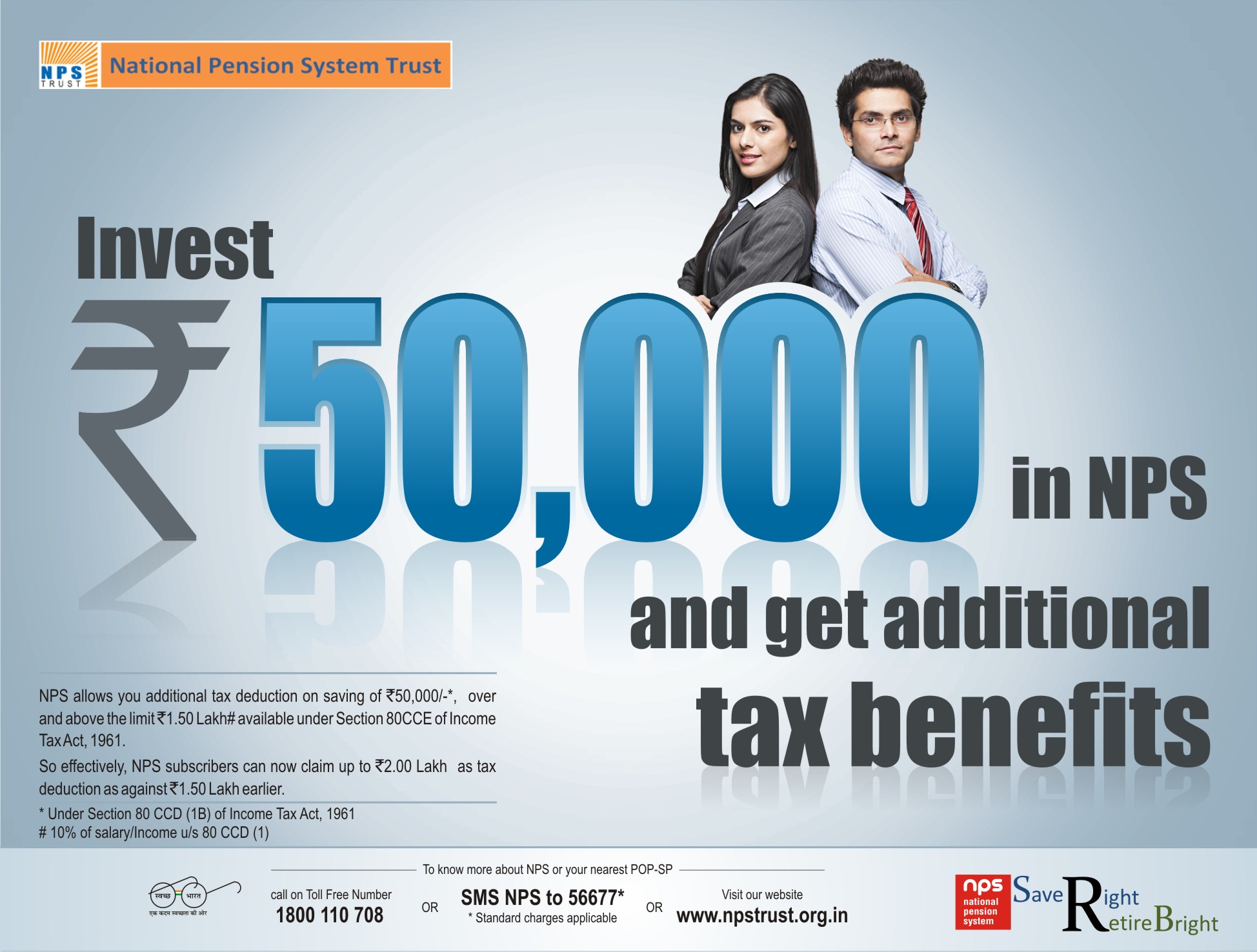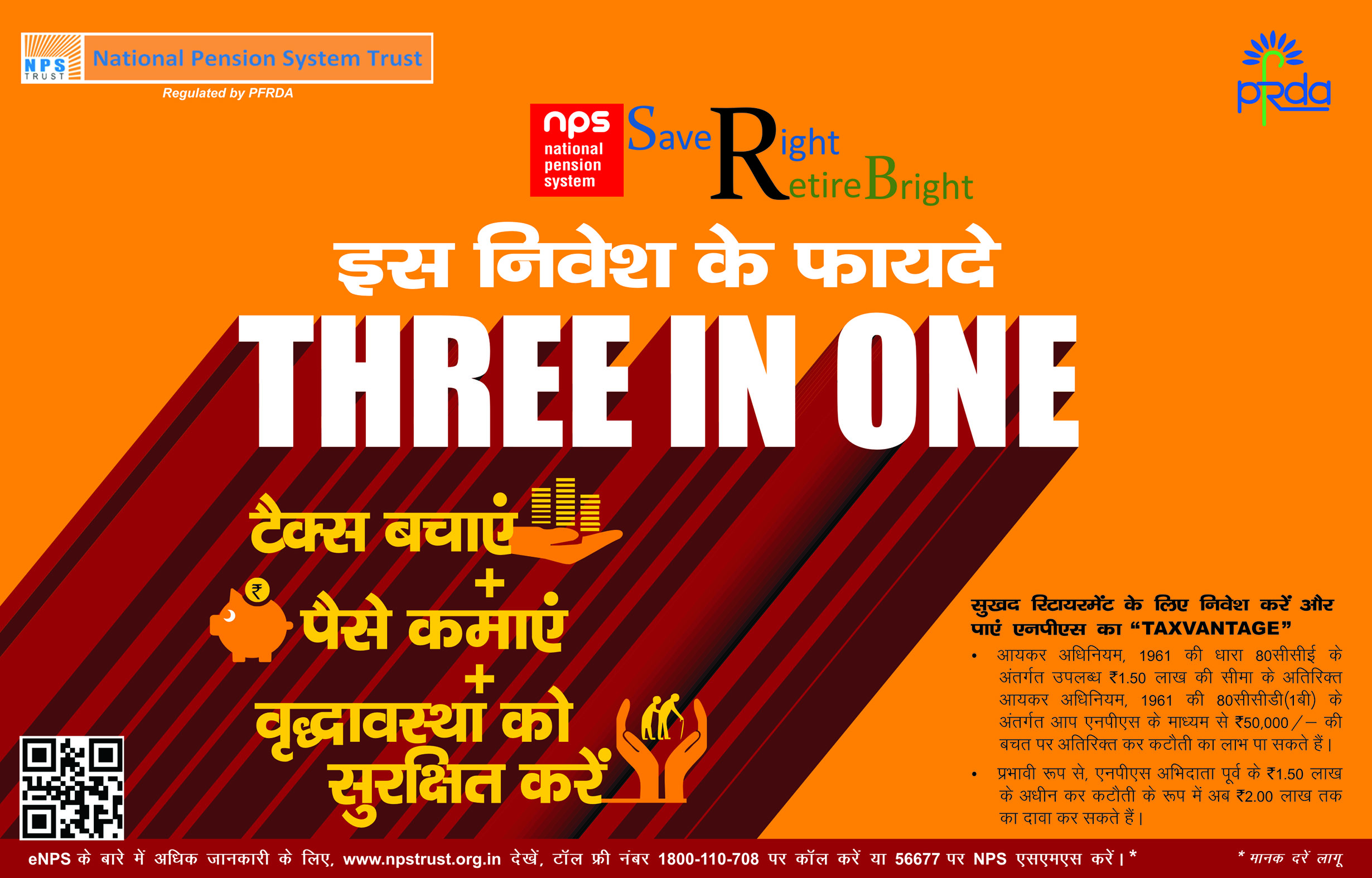
There are many pension investment schemes in India that provide either a regular pension or attractive returns on your investment, post-retirement. National Pension System – NPS is a government-backed retirement savings plan for any Indian citizen aged 18-60.
The scheme is slowly becoming popular with middle-class taxpayers due to constant changes in the rules and better tax saving features. From 2011 onwards, employees could claim tax deductions under Sec 80CCD (1) in addition to Sec 80CCE.

NPS is a quasi-EET instrument in India where 40% of the corpus escapes tax at maturity, while 60% of the corpus is taxable. Of the 60% taxable corpus, 40% is tax-exempt as it has to be compulsorily used to purchase an annuity. The annuity income will be taxed, though.
The remaining 20% alone will now be taxed at slab rates on withdrawal. NPS offers subscribers a choice of two record-keeping agencies: NCRA (NSDL-CRA) and KCRA (Karvy-CRA). In 2017 Union budget of India, 25% exemption of the contribution made by an employee has been announced as a form of premature partial withdrawal in NPS. This amendment will take effect on 1 April 2018 and will, accordingly, apply in relation to the assessment year 2018-19. NPS is a market-linked annuity product. The number of pension fund managers (PFM) has increased to 9 in NPS:
- SBI Pension Funds
- LIC Pension Fund
- UTI Retirement Solutions
- HDFC Pension Fund
- ICICI Prudential Pension Fund
- Kotak Pension Fund
- Reliance Capital Pension Fund
- Birla Sun Life Pension Management Ltd.
SBI Pension Funds is the largest pension fund manager (PFM) in India and its assets under management(AUM) level is Rs 61,000 crore.[37]
At Present, Central government employees have no say in the matter of choice of the fund manager or investment allocation in NPS, as both are decided by the government. All the NPS contributions of Central government employees are being distributed evenly across three public sector fund managers: LIC Pension Fund, SBI Pension Fund and UTI Retirement Solutions. The current CRAs are the NSDL e-Governance Infrastructure Limited (NCRA) and Karvy Computer Shares Pvt Ltd (KCRA). All the major commercial banks, brokers and Stock Holding Corporation Ltd perform the role of PoP. The subscriber can choose any one of them. There are seven fund managers and eight annuity service providers for subscribers to choose from. The subscriber can choose to invest either, wholly or in combination, in four types of investment schemes offered by the pension fund managers. These are:
- Scheme E (equity) which allows up to 50% equity participation, this is invested in stocks.
- Scheme C (corporate debt) which invests only in high-quality corporate bonds.
- Scheme G (government/Gilt bonds) which invests only in government bonds.
- Scheme A (Alternative Investment)which allows up to 5% (Newly added asset class only for private sector subscriber with active choice)
Alternatively, the subscriber can opt for the default scheme, whereas per the time left to retirement his portfolio is rebalanced each year for the proportion of equity, corporate bonds, and government bonds.
NPS offers two types of accounts to its subscribers:
- Tier I: The primary account, which is a pension account which has restrictions on withdrawals and utilization of accumulated corpus. All the tax breaks that NPS offers are applicable only to Tier I accounts.
- Tier II: In order to introduce some liquidity to the scheme, the PFRDA allows for a Tier II account where subscribers with pre-existing Tier
I accounts can deposit and withdraw monies as and when they want. NPS Tier II is an investment account, similar to a mutual fund in characteristics.

